| Columns Retired Columns & Blogs |
Quite an esoteric review.
I measured the PS Audio BHK Signature preamplifier with my Audio Precision SYS2722 system (see the January 2008 "As We See It"). The gain with the volume control set to its maximum of "100" was 9.8dB, balanced input to balanced output; 3.7dB, unbalanced input to unbalanced output; and 9.7dB, unbalanced input to headphone output. The unity-gain setting at the line outputs would be between "79" and "80" on the front-panel display, except that that isn't possible; the balanced gain at "80" was 0.33dB. Both sets of inputs preserved absolute polarity (ie, were non-inverting). The unbalanced inputs offered a usefully high input impedance of 77k ohms at 20Hz and 1kHz, dropping inconsequentially to 53k ohms at 20kHz. The balanced input impedances were twice these values, as expected. The line output impedance, specified as <100 ohms, was 215 ohms balanced and 108 ohms unbalanced, both values consistent across the audioband. The headphone output impedance, specified as <0.5 ohm, was still very low at 1.5 ohms.
The BHK Signature's frequency response depended to some extent on the setting of its volume control. The cyan and magenta traces in fig.1 were taken with the volume control set to "100," the output is down by 1dB at 20kHz. The response was identical with the control set to "90," but at "80" and below (blue, red, green, and gray traces) the audioband response was flat, the –1dB point moving up to 55kHz. This graph was taken from the BHK's balanced outputs into 100k ohms; the unbalanced and headphone outputs behaved similarly, as did the balanced output into the very demanding 600 ohm load. Note the superb channel matching in this graph.
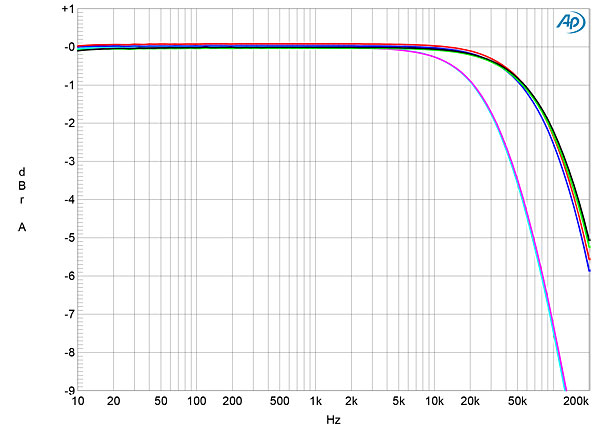
Channel separation (not shown) was superb in both directions, at >120dB below 1kHz. However, the crosstalk at higher frequencies rose a little more in the R–L direction than in L–R, the separation reaching 93dB R–L and 108dB L–R at 20kHz. This is still excellent performance, however. The unweighted, wideband signal/noise ratio, ref. 1V output with the input shorted to ground but the volume control set to "100" (the worst case), was excellent, at 85.6dB. Restricting the measurement bandwidth to 22kHz increased the S/N to 91.1dB left and 91.9dB right, with A-weighting improving the ratio to 94.7dB in both channels. Spectral analysis of the low-frequency noise floor of the BHK Signature's balanced output (fig.2) revealed that power-supply–related spuriae at 120Hz and its multiples were slightly higher in the left channel (blue and green traces) than in the right (red, gray). These spuriae were all very low in absolute terms. However, they were all 17dB or so higher in the unbalanced output's noise floor, the 120Hz artifact lying at –88dB ref. 1V (not shown), though this still won't be audible.
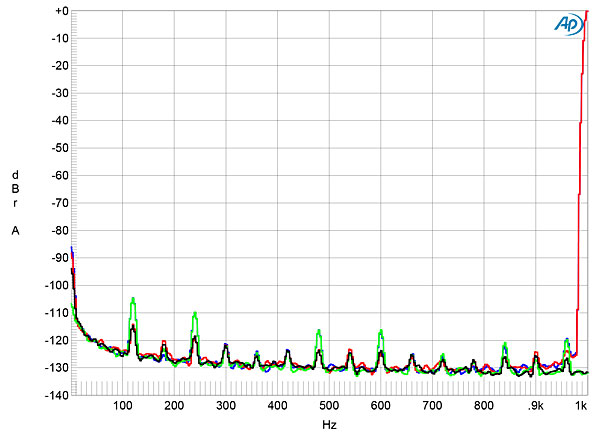
The BHK Signature preamplifier offers both very low distortion and a high maximum output before clipping (defined as when the THD+noise reaches 1%). The balanced output doesn't clip until 29V into 100k ohms (fig.3), and not until 17.5V into 600 ohms. The unbalanced output clips at 12V into 100k ohms (fig.4). Note that while the minimum distortion appears to be higher in this graph compared with fig.3, this trace shows the THD plus the noise, and the distortion doesn't rise above the level of the power-supply spuriae in fig.4 until 1V.
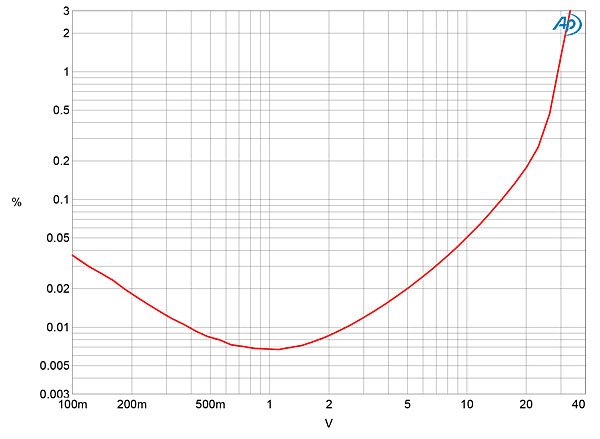
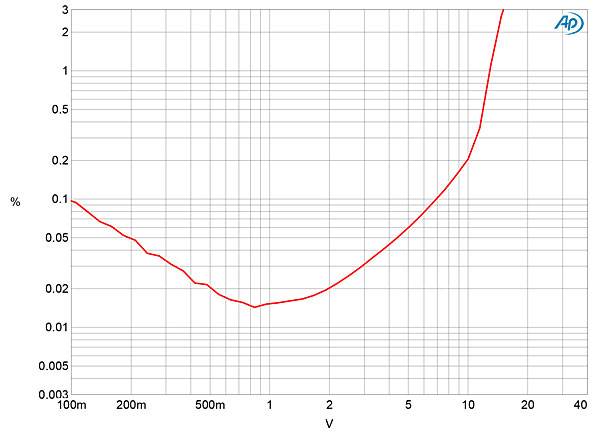
Measured at an output level of 2V so that I could be sure I was looking at distortion, the BHK's percentage of THD+N didn't change with frequency, though the left channel was not quite as linear as the right: the balanced THD+N at 1kHz lay at 0.009% left and 0.0045% right. This was due to a slightly higher level of second-harmonic distortion in the left channel (fig.5, blue trace) than the right (red). This graph was taken into 100k ohms; though the levels of the harmonics rose slightly into 600 ohms (fig.6), they all lay at or below –80dB (0.01%). This preamplifier has a bombproof output stage. Intermodulation distortion was similarly low, even into 6 ohms, though the second-order difference product at 1kHz resulting from an equal mix of 19 and 20kHz tones is higher in the left channel (fig.7, blue trace) than the right (red).

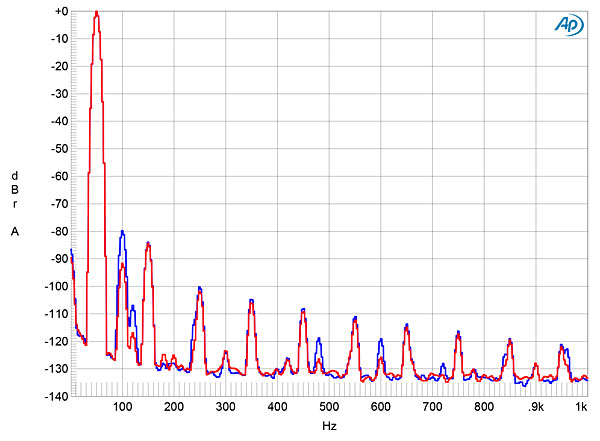
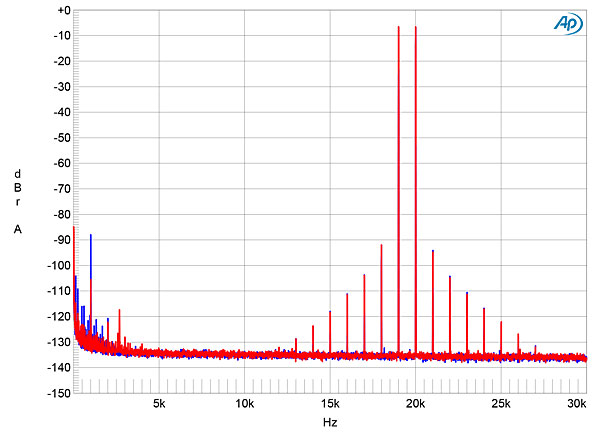
The minor differences I found between the PS Audio BHK Signature's two channels might be due to transfer-function differences between its tubes. But even if that was the case, this preamplifier measured superbly.—John Atkinson

Nice writing, read it three times. Well done Mr. Austin...keep em coming. BTW, did you ever get A/C for the apt?

>>Nice writing, read it three times. Well done Mr. Austin...keep em coming.<<
Thanks!
>>BTW, did you ever get A/C for the apt?<<
No, but I'm seriously considering it. Main problem is, the only place to put one in the main living space is right behind the component rack. I'll probably need to chill the place and then turn it off for critical listening.
Cheers,
Jim

Well done. Great style. Wish more writers hit the spots you did. Thanks.

Thank you! Much appreciated!